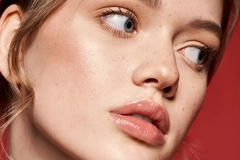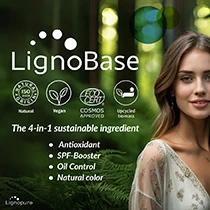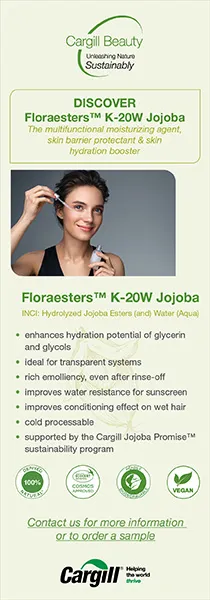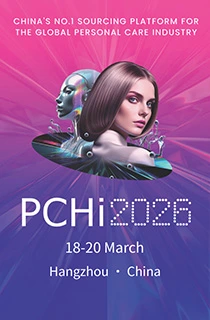Inflation, COVID-19 and Russia-Ukraine war: The trifecta driving radical change in the beauty industry

06 Oct 2022 --- A generation of hyper-knowledgeable consumers is demanding more openness around supply chain ethics, carbon footprint and financial inclusivity in the growing cost of living and climate crises, reveals a report commissioned by Beauty Pie.
The report titled, Beauty Futures 2025: Beauty, Beautility and the Rise of the ‘Question Everything’ Economy, has been released in partnership with The Future Laboratory.
The companies argue that a period of financial uncertainty, increased free time during the pandemic and greater access to information has created a generation of savvy consumers expecting brands to provide more honesty about their products – from efficacy to supply chain.
“Over the past few years, the constraints of a global pandemic have given beauty customers time to research and learn, whether it’s skincare or cosmetic ingredients,” says Marcia Kilgore, founder at Beauty Pie.
“As a result, we have a new cohort of customer experts who are now challenging the status quo and what cosmetic companies may have told them before, wanting to go deeper.”
The report predicts three macrotrends that will define the industry in 2025 and beyond: “Beautility Rising, Beauty Recoded and the Fairness Equation.”
Inflation driving beauty decisions
The report highlights that the beauty industry is expected to “shift radically” toward self-care rather than luxury. It claims that beauty producers are feeling unprecedented inflationary pressures from a post-pandemic economy, the Ukraine conflict and ensuing supply chain impacts.
 Beautility, e-commerce and fairness are the three macrotrends predicted to define the beauty industry.“Our customers – juggling mortgage payments, petrol prices, school fees and medical bills – can surely find something better to spend their money on than mark-ups,” says Kilgore.
Beautility, e-commerce and fairness are the three macrotrends predicted to define the beauty industry.“Our customers – juggling mortgage payments, petrol prices, school fees and medical bills – can surely find something better to spend their money on than mark-ups,” says Kilgore.
Another focus area is price as beauty brands grapple with raw ingredients shortages, massive shipping delays and soaring costs that show no signs of abating.
“The majority of beauty brands are developed in partnership with a third-party lab, and awareness around this fact is growing. This has the potential to transform definitions of beauty, shifting focus from brands and legacy to fairness and functionality,” explains Livvy Houghton, deputy creative editor and beauty expert at The Future Laboratory.
Age of discernment
According to the study, trust fatigue and increased information have led consumers to demand facts – namely ingredient composition, ethical sourcing and packaging transparency.
Consumers are increasingly interested in the science behind new product launches.
“We are speeding into the age of discernment. For the beauty industry, this equates to research, testing, proof points and facts that will foster understanding, trust and positive sentiment among audiences,” says Martin Raymond, co-founder at The Future Laboratory.
A community-led approach is emerging owing to influencer saturation. “The increasing value of engagement, feedback and conversational commerce is forcing brands to reconsider their community’s and audience’s cultural and commercial cachet,” the report underpins.
The study reiterates that shared values and empowering customers to ensure consumer retention and purchase frequency have replaced exclusivity and status. User-generated content is ten times more influential in purchasing decisions than an influencer or branded content.
“True empowerment is ultimately about helping customers to engage on their terms, whether it’s fair pricing, openness and expertise around ingredients or interactions that deliver an emotional benefit,” says Raymond. Marcia Kilgore, founder of DTC beauty buyers club, Beauty Pie, says social, economic and cultural factors creating challenges that future-facing brands must strive to meet. (Credit: Beauty Pie)
Marcia Kilgore, founder of DTC beauty buyers club, Beauty Pie, says social, economic and cultural factors creating challenges that future-facing brands must strive to meet. (Credit: Beauty Pie)
Be fair or be square
By 2025, fairness will be solidified in the beauty industry lexicon – welcoming a new era of openness, honesty and accountability around everything from pricing and product ingredients to supply chains and sustainability, the report states.
“Fairness ensures that brand leaders deliver something they would use themselves and buy for the price they are charging,” says Kilgore. “It’s also about making changes iteratively and openly should ‘no’ be the answers to those questions.”
Beauty industry mark-ups are becoming increasingly demystified – “with some brands demonstrating four-figure inflation for specific products.” Consumers have never been savvier about the actual cost of beauty or more discerning about the price they are willing to pay, Beauty Pie says.
“Greater customer education around pricing and mark-ups can help break the strong assumption that price is cumulatively linked to quality. This shift would significantly impact notions of luxury, and brands savvy to it can prove positively disruptive,” says Benjamin Voyer, behavioural scientist.
Beauty as medicine
A convergence of beauty and utility, dubbed “Beautility,” is highlighted. “The fusion of well-being and wellness into beauty has almost created a new category,” says Millie Kendall, founder of the British Beauty Council.
Caught in a state of flux, consumers and brands are recalibrating to create a new era in which personal transformation trumps consumption and throwaway interactions are traded for more meaningful, contemplative moments.
“Within the beauty industry, this development will see the concept of beauty as medicine take root,” shares Beauty Pie.
“The onset of the Beautility era is reshuffling consumer priorities as savvy beauty buyers begin to approach products with the same discerning eye they bring to their nutritional, exercise and supplement choices – marking a seismic shift toward ingredients and functionality focus.” The Russia-Ukraine war has also resulted in increased costs of production and supply.
The Russia-Ukraine war has also resulted in increased costs of production and supply.
“In this future, make-up and skincare, nutrition and beauty will blur – with science-led beauty tools, nutritional ingredients and pharmaceutical-grade molecules set to emerge as standard and celebrated for their direct health benefits.”
Future is digital
More than 50% of sales in the beauty sector will come from e-commerce in the next five years, amounting to £285 billion (US$305.2 billion), the report predicts.
Reportedly, by the end of the decade, beauty brands will develop a symbiotic brand and consumer relationships, borrowing from the emerging Web 3.0 – to turn their loyalty schemes or subscription services into Decentralized Autonomous Organizations (DAOs).
DAOs are member-owned communities that invite consumers in on decision-making and community building and represent a new democratized way of organizing a business. Beyond streamlining production methods, these models also bolster consumer loyalty and spending.
It is forecasted that more than 50% of sales in the beauty sector will come from e-commerce over the next four years. “By 2025, we can expect these models to have developed further, evolving into SaaS businesses, or ‘sourcing as a service,’ a term Kilgore has already used to describe Beauty Pie,” the report says.
Edited by Radhika Sikaria












